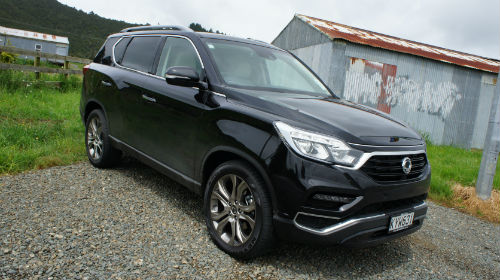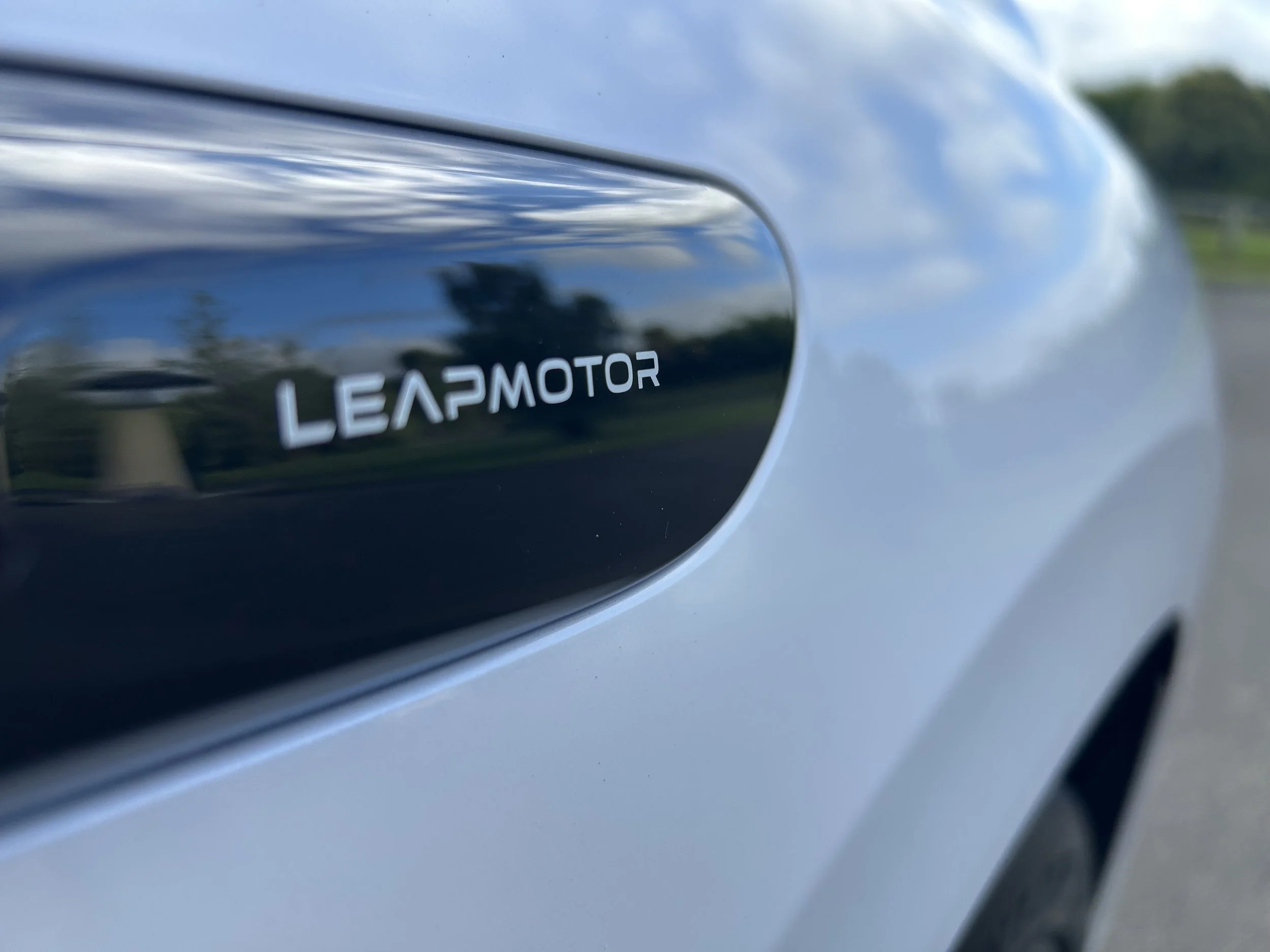SsangYong Rexton G4: Smartened, still setting own pace
/In the SUV sector, some still like ‘em old-school tough … and a newly-released big Korean seven-seater continues to oblige.
ONE interesting emergent facet from the big consumer swing toward sports utilities is that there’s enduring interest in big rigs that haven’t wholly changed with the times.
Wagon conversions of one-tonne utilities tap into this trend, but conceivably the just-landed fourth generation of the SsangYong Rexton comes even closer to meeting this taste.
It’s all new in look, presenting modern exterior lines with a more upscale seven-chair interior and also delivers a much-improved specification over the preceding edition, though unevenly. Also, there’s the allure of a warranty distributor Great Lakes Motors believes is unmatched by any other brand here – five years, 150,000 kilometres, wholly transferable. Kaboom!
Despite the family having thinned from six to three – a $59,990 Sport and $67,990 SPR here now, both in seven-speed auto and four-wheel-drive and with the 2.2-litre turbodiesel that debuted in 2015 but now makes 133kW (up 3kW) and 420Nm (against 400 before) and a rear drive 165kW/350Nm 2.0-litre petrol next year – it is expected to achieve 500 registrations, 100 more than the outgoing range reaped in 2016, a boom year for the brand.
Optimism about growth expressed by brand boss Andrew Bayliss isn’t just founded on the big surge in SUV sales in general. It’s also spurred, quirkily enough, because SsangYong sees strength in the Rexton being built as the outgoing edition was - in the old ultra-utilitarian four-by-four way.
Meaning? It is not of car-like monocoque construction, but instead continues with a body-on-ladder-frame arrangement. Also, while it gets all up-to-date with tech assists such as hill descent control, the mainstay off-roading hardware is to a very tried and tested formula. So, a mechanical four-wheel-drive system with a proper locking differential, for starters.
Who still wants that? Certainly, this is an allegiance to an approach almost all other players, including many other ‘hard-core’ brands, have left behind.
Rexton G4 could well become the last full-frame brand-new medium-large seven seater wagon to be offered here, but the chassis choice obviously remains important to SsangYong. Rendered from fancy ultra-high tensile giga steel, this underpinning is also underpinning a new utility coming next year.
Those with long memories will know body-on-frame can provide somewhat of a give and take scenario, and to an extent that’s still evident with Rexton.
Work to improve dynamics has been fruitful; so too the update to a multilink rear suspension. Yet perhaps it is not the most cultured or car-like on the open road and around town.
This turbodiesel has reasonable punch (though doesn’t seem as reactive as Hyundai-Kia’s like-sized unit) but refinement is not completely the strongest suite – it’s quiet enough on the highway at a steady 100kmh, when operating in the 1000-3000rpm range, but gets raucous when pushed along on winding roads. The shift is measured, too, and there are no paddle shifts to give it a giddy up.
Handling-wise it’s pretty good for what it is. Naturally there’s some swagger and lean during quick cornering and the ride across rippled roads can make it get a bit bobbly. Yet is also has decent, precise steering and while the brakes need a bit of a prod, they work progressively and smoothly. In short, it’s an SUV that’s not that sporty.
Some of these traits might alienate. Assuredly, though, there are factors that will attract. Notably, it feels not only impressively well-constructed by also immensely tough and robust. There’s an air of no-nonsense, reliable ruggedness that lends immediate and lasting impression that the strong off-road, heavy-duty towing and rural condition credibility established with the old model will continue unabated.
It’s easy, therefore, to see how this model will make friends out of folk who live in tough places, such as remote rural locales, or are city-bound yet also of a mind that a big SUV is better-employed at weekends hauling around large loads on trailers, rather than cruising cafes.
A 3.5 tonne towing capacity is fast becoming a sector norm these days but is an improvement for Rexton, the old one being rated at 2600kg, that puts it up with the big boys. The towing rating also remains credible when the vehicle is fully loaded, unlike many utes which are only good to haul that much when they have two occupants aboard and nothing in the tray.
While our first drive did not include any off-roading, it’s fair to suggest that within SUV-dom, you might expect to find that its rough-terrain abilities quite probably comfortably exceed those you’d expect to find from a fully modern alternate, even when taking into account that the flagship rolls on 255/50 R20s.
Basically, then, it’s in the same league of a relative hardy few, but with the usual extra-value spin that you expect out of Korea that makes sorting out probable competitors a bit of a challenge.
It's a physically giant thing, at 4.85 metres long, near two metres wide and 1.8 metres tall, but those dimensions, or the kilo count – not provided but, from the look of it, comfortably over two tonnes despite the new steel bringing weight saving – don’t really weigh in. If they did, you’d compare it with the likes of a full-sized Toyota Land Cruiser or a Land Rover Discovery. Except you won’t because both cost a lot more than the Korean product.
Realistically therefore it will be compared against those ute-derived seven-seaters: Trailblazer, Isuzu’s D-Max-drawn M-UX, the Triton-related Mitsubishi Pajero Sport, the Hilux-mirroring Toyota Fortuner and Ford’s Everest, which is drawn from the Ranger. Though, actually, even some of those are also costlier.
Land Cruiser Prado, Jeep Grand Cherokee, the Peugeot 5008 and, inevitably – given their common heritage – the Hyundai Santa Fe and Kia Sorento must also be considered, the brand contends.
Rexton’s ability to go big for a relatively low price point is impressive because this version is, regardless of its basic makeup, very much more sophisticated than the last and probably costs more to make.
The update is a bold statement about SsangYong’s improving standing. Majority-owned by Indian conglomerate Mahindra, Korea’s third largest marque has definitely pulled itself out of the mire of 2009, when it went into bankruptcy protection.
Impressive local market progress – it was the fastest-growing brand here in 2016, when it reaped 2300 registrations – is in tune with a home base intent to emulate the transformation that Hyundai and Kia have gone through.
While the smaller Korando and Tivoli SUVs have broadened the brand’s appeal and elevated its standing here, this G4 Rexton is considered the key vehicle.
Thus New Zealand is among the first right-hand-drive export countries for a model that only premiered at the Seoul motor show in March.
Significant changes over the previous vehicle including a new front fascia with redesigned headlights and what looks to be LED daytime running lights, as well as roof rails, chrome window surrounds and updated grille, front bumper and fog-lights.
It's perhaps not the most handsome of vehicles in the class, granted, and the 20-inch chrome-finish wheels on the top-spec model are a touch too Mattel for my liking, but it at least has a strong road presence.
The interior has also received major upgrades. Unlike Kia and Hyundai, SsangYong hasn’t had the ability to hire a legion of ex-Volkswagen designers to sort out their architecture, so there’s still some Korean chintz and it also has a touch of button weirdness. The steering wheel switches look and feel a bit fragile and, though taking a transmission from Mercedes is no bad thing, it was a mistake to also implant a rocker switch for the transmission’s ‘winter’ and ‘sport’ modes that is identical to those from 1980s’ Benz cars.
But these are more observations that actual complaints. SsangYong’s comment that it has done enough here to be considered a member of the premium party holds credence; nicely rubberised column stalks and a pretty decent stab at touchscreen infotainment on an 9.2-inch display (on the SPR; it's eight inches for the Sport) in the dash earn big ticks. I’m not adverse, either, to the quilt-stitched leather panels in the doors and across the middle of the main dash construct with the flagship. Different, yes, but not necessarily unattractive.
In fact, the SPR in general is pretty alluring for any buyer hoping to aim high and spend low. This edition has all the fruit with, apart from that big touchscreen, real leather (as opposed to the Sport's leatherette) and wood trim on the dash and a suite of safety features including lane departure warning, lane change assist, blind spot detection, rear cross-traffic alert, automatic high beam, advanced emergency braking with pedestrian assist and nine airbags. It’s a pity the Sport has a more traditional instrumentation and lacks the electronic driver aides. In respect to electronic assists, though, the only obvious lapse against the opposition is the absence of a trailer sway control.There’s no crash test score, yet; the model is unlikely to take an ANCAP rating because it is not being considered for Australia, so potentially NCAP will pick up the responsibility when it goes on sale in Europe next year.
What else? Well, it’s absolutely cavernous within. As is typical for the type, those third row seats, in the boot area, are kid-prioritised, if only because they’re mounted in a low-to-the-floor position. But the middle row has acres of space up to the front seats. Even with all the chairs in place you’re looking at 649 litres’ luggage capacity; rising to 820-ish when it’s in five-chair configuration (when you get a flat floor by reset the floor panel in the very back into a higher position). Fold all the back chairs away and it has more than 1800 litres’ capacity.
The tailgate is powered and can be configured to open automatically should the keyholder stand near it for more than three seconds. This is for people with armloads of grocery and preference, the brand suggests, than those systems that have sensors under the car and require a foot waggle to activate.
All in all, while the Rexton might seem a small step back in time in respect to its construction, it also nonetheless presents a big leap forward for its maker. A decade ago, it would be one a number of similarly-sized big lugger wagons. Today it stands almost alone: Which means it basically has a clear run to achieving the success its maker and distributor believes is well due.
















